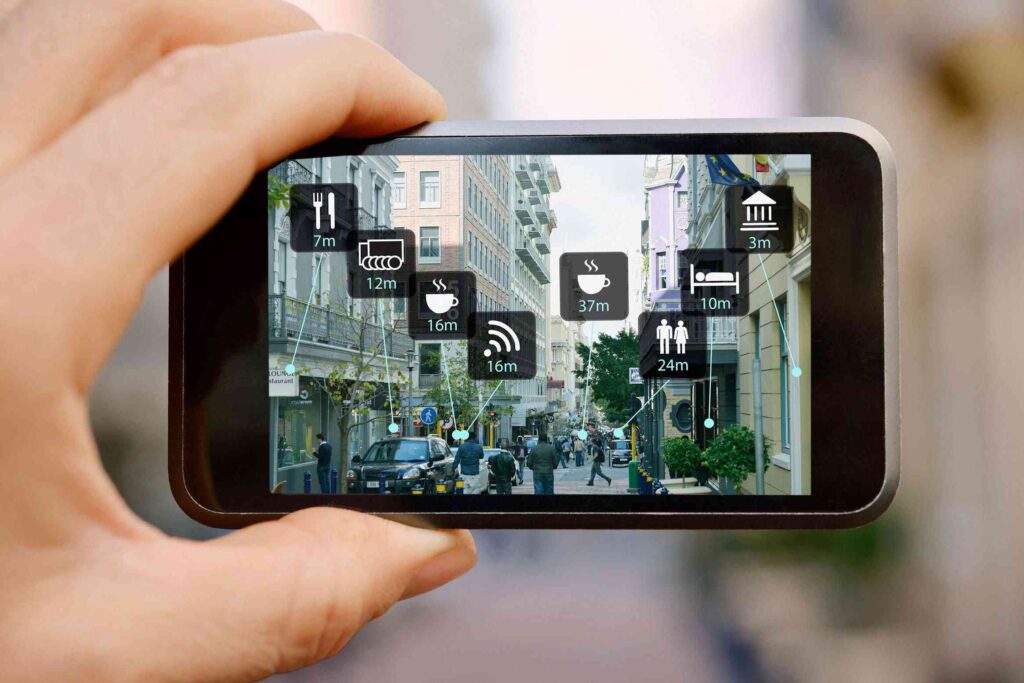In recent years, augmented reality (AR) has emerged as a groundbreaking technology that is revolutionizing the retail landscape. By seamlessly blending digital elements with the physical world, AR is enhancing customer experiences and creating immersive shopping environments. As retailers strive to engage consumers in new and innovative ways, understanding how augmented reality is shaping the future of retail experiences becomes essential for businesses looking to stay ahead of the competition.
This article will delve into the various ways AR is transforming retail, from virtual try-ons that allow customers to visualize products before purchase to interactive displays that provide personalized shopping experiences. We will explore case studies of leading brands that have successfully integrated AR into their marketing strategies, showcasing the tangible benefits of this technology. Additionally, we will discuss the challenges retailers face in adopting AR and how they can overcome these hurdles to create a more engaging shopping experience.
As you read on, you will discover the potential of augmented reality to not only enhance customer satisfaction but also drive sales and brand loyalty. Whether you are a retailer, marketer, or simply an enthusiast of technological advancements, this exploration of how augmented reality is shaping the future of retail experiences will provide valuable insights and inspire you to embrace the future of shopping. Join us as we uncover the exciting possibilities that lie ahead!
Augmented Reality (AR) is revolutionizing the retail landscape by enhancing customer engagement and transforming shopping experiences. This technology overlays digital information onto the real world, allowing consumers to interact with products in innovative ways. Below are key subtopics that explore how AR is shaping the future of retail.
Enhancing Customer Engagement Through AR
Augmented Reality provides retailers with unique opportunities to engage customers in immersive ways. By integrating AR into their marketing strategies, brands can create interactive experiences that captivate consumers. For instance, virtual try-ons allow customers to see how clothing or accessories look on them without physically trying them on. This not only enhances the shopping experience but also reduces return rates, as customers are more likely to make informed decisions.
Moreover, AR can be used to gamify the shopping experience, encouraging customers to explore stores and discover products through interactive challenges. This level of engagement fosters a deeper connection between the brand and the consumer, ultimately driving sales and customer loyalty.
Virtual Try-Ons: A Game Changer for Fashion Retail
Virtual try-ons have emerged as a significant trend in the fashion retail sector, allowing customers to visualize how garments will fit and look on them. Retailers like Warby Parker and Sephora have successfully implemented AR technology to enable customers to try on glasses and makeup virtually. This not only enhances the shopping experience but also builds consumer confidence in their purchases.
As AR technology continues to evolve, we can expect even more sophisticated virtual try-on solutions that incorporate advanced features like body scanning and personalized recommendations. This will further streamline the shopping process and cater to individual customer preferences.
AR in Home Decor: Visualizing Products in Real Time
In the home decor industry, AR allows customers to visualize how furniture and decor items will look in their own spaces before making a purchase. Retailers like IKEA have developed AR applications that enable users to place virtual furniture in their homes using their smartphones. This capability helps customers make better purchasing decisions and reduces the likelihood of buyer’s remorse.
By providing a realistic representation of products in a customer’s environment, AR enhances the overall shopping experience and encourages consumers to explore a wider range of options. This technology not only benefits customers but also helps retailers reduce return rates and improve customer satisfaction.
Streamlining the In-Store Experience with AR Navigation
AR technology can significantly improve the in-store shopping experience by providing customers with navigation assistance. Retailers can develop AR applications that guide shoppers to specific products within a store, making it easier for them to find what they need. This is particularly beneficial in large retail spaces where customers may feel overwhelmed or lost.
Additionally, AR can offer personalized recommendations based on a customer’s location within the store, enhancing the shopping experience and increasing the likelihood of impulse purchases. By streamlining the in-store experience, retailers can create a more efficient and enjoyable shopping environment.
Bridging the Gap Between Online and Offline Shopping
Augmented Reality serves as a bridge between online and offline shopping experiences. With AR, customers can interact with products in a virtual space before visiting a physical store. This technology allows consumers to research products online and visualize them in real life, making the transition from online browsing to in-store shopping seamless.
Retailers can leverage AR to create cohesive omnichannel experiences that cater to the preferences of modern consumers. By integrating AR into their marketing strategies, brands can enhance customer satisfaction and drive sales across multiple channels.
Personalization and Customization Through AR
AR technology enables retailers to offer personalized and customized shopping experiences. By analyzing customer data and preferences, retailers can create tailored AR experiences that resonate with individual consumers. For example, AR applications can suggest products based on a customer’s previous purchases or browsing history, enhancing the likelihood of conversion.
This level of personalization not only improves customer satisfaction but also fosters brand loyalty. As consumers increasingly seek unique and personalized experiences, retailers that embrace AR technology will have a competitive edge in the market.
The Role of AR in Marketing and Advertising
Augmented Reality is transforming marketing and advertising strategies in the retail sector. Brands can create interactive advertisements that engage consumers in new and exciting ways. For instance, AR-enabled print ads can allow customers to scan a code and see a 3D model of a product, providing a more immersive experience than traditional advertising methods.
By incorporating AR into their marketing campaigns, retailers can capture consumer attention and drive engagement. This innovative approach not only enhances brand visibility but also encourages customers to share their experiences on social media, further amplifying the brand’s reach.
Future Trends: The Evolution of AR in Retail
The future of Augmented Reality in retail is promising, with continuous advancements in technology paving the way for new applications. As AR becomes more accessible and affordable, we can expect to see widespread adoption across various retail sectors. Innovations such as AR glasses and improved mobile applications will further enhance the shopping experience, making it more interactive and engaging.
Additionally, as consumers become more accustomed to AR technology, retailers will need to stay ahead of the curve by continuously evolving their AR strategies. The integration of artificial intelligence and machine learning with AR will also play a crucial role in personalizing the shopping experience and predicting consumer behavior.
| Aspect | Description |
|---|---|
| Enhanced Customer Engagement | Augmented Reality (AR) allows customers to interact with products in a more immersive way, increasing engagement and interest. |
| Virtual Try-Ons | Retailers are using AR to enable customers to virtually try on clothing, accessories, and makeup, enhancing the shopping experience. |
| Personalized Shopping | AR can provide personalized recommendations based on customer preferences and past purchases, making shopping more tailored. |
| In-Store Navigation | AR applications can guide customers through stores, helping them find products quickly and efficiently, improving the overall shopping experience. |
| Interactive Marketing | Brands are using AR for interactive advertisements that allow customers to engage with products in a fun and memorable way. |
| Data Collection | AR tools can collect data on customer behavior and preferences, providing retailers with valuable insights for future marketing strategies. |
| Cost Efficiency | By reducing the need for physical inventory and allowing for virtual displays, AR can help retailers save costs while enhancing customer experience. |
| Future Trends | As technology advances, AR is expected to become more integrated into retail, with innovations like smart mirrors and AR-enabled mobile apps. |



